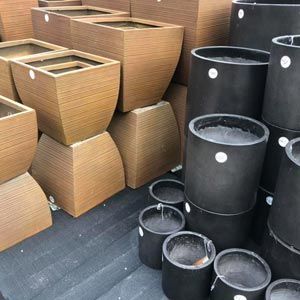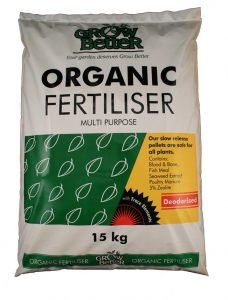Snake plants are a stunning species of succulent, known for their tall leaves and colour variations. It is ideal for eery home interior as it complements almost every style of home and they look great in arrangements. Snake plants are known for being hardy and are one of the easiest types of succulents to care for. This makes them ideal for beginners and those with a black thumb. But even though snake plants are tough, you still need to care for them. So below are our 15 best tips to grow a healthy snake plant indoors.

1: Best Soil for Snake Plants
Snake plants are sensitive to water and are prone to root rot. This is why it is important to plant them in well-draining soil. A commercial succulent or cactus soil is ideal for snake plants as it has added sand that helps with drainage. You can also make your own succulent soil from scratch. This saves you money and lets you control exactly what goes into it. We recommend 3 parts potting soil, 2 parts coarse builder’s sand, and one part pumice. But for beginners, commercial succulent or cacti soil is perfectly fine!

2: Repotting Snake Plants
Snake plants like to be a little pot bound so you don’t need to repot your plant until they’re nearly bursting out of the pot. Once you see obvious signs of overgrowth, like excessive top heaviness of the plant that is causing it to nearly topple over, or roots sticking out the drainage hole. Generally you only need to repot your snake plant every 3-6 years.
Repotting is fairly easy. Choose a pot that’s only a few inches larger than the old one and ensure it has a decent drainage hole. Drainage is of the utmost importance as snake plants rot if they sit in water. When repotting, fill the new pot about a third of the way full. Support your succulent by placing your hand on top of the soil and gently turn the pot over. Your plant should plop right out with a little tapping. If it won’t come loose at all, try watering it as the water will loosen the soil and make it easier to remove the plant from its pot.
Place your plant in the new pot and make sure it sits one or two inches below the pot’s rim. Fill with soil and leave the snake plant to adjust to its pot for a few days before watering. Hold of fertilising for a few weeks, too, so you don’t damage the roots.

3: What is the Best Pot for a Snake Plant?
Your snake plant doesn’t need a deep pot because the roots generally prefer laying close to the surface of the soil. Deep pots also include more soil mass and is likely to cause over-watering issues. Taller varieties of snake plants will need bigger and larger pots. For example, a 10 inch snake plant will need a 12 inch container. Well-draining potting mix in a terracotta pot is ideal for gardening beginners. It is a foolproof combination to help you take care of the plant properly.
Terracotta is the best material option for snake plants as the potting soil dries out faster than in a plastic container, which reduces the risk of excess water. Porcelain and ceramics are the most ere-catching for home décor and their stain-proof feature and smooth finish are a bonus. Always look for connected saucers for indoor plants to keep water from draining onto your furnishings. Stands and holders also look stunning and eye catching.

4: How Much Water Does a Snake Plant Need?
Succulents need a lot less water than other plants. This means they also need a completely different watering schedule. Snake plants do best when you let the soil dry out completely between watering, which is usually around a week. They require a lot less water than other succulents, so you may want to water your snake plant every week and a half to two weeks, instead of every week.
5: How to Water a Snake Plant
Water your snake plant by flooding it until water starts to run out of the drainage holes. Make sure that your succulent doesn’t sit in any water. If your snake plant sits in a saucer, lift the pot up one or twice a day to ensure you’re draining any excess water. And make sure the soil is dry to the touch before you water.
6: Light Requirements for Snake Plants
Snake plants thrive best in indirect sunlight but they’re pretty adaptable. They can survive in low light conditions and full sunlight as well. The fact that they love indirect sunlight makes them ideal houseplants. To keep your plant happy and healthy, try choosing an east facing window as they provide a few hours of direct sunlight in the morning and indirect sunlight for the rest of the day, which is ideal for snake plants. Placing your plant in brighter south and west facing windows can provide too much direct sunlight that it can burn the leaves of your snake plant.
7: Snake Plant Temperature Requirements
Snake plants don’t tolerate the cold. If you leave them out in freezing temperatures, the water inside their cells can freeze, expand, and then burst their cell walls. This causes tissue damage and can make the leaves look brown and mushy. Your plant can even die if it’s left outside in the cold for too long. Protect your plant from temperatures below 5°C. They do best in temperatures between 20-30°C. Your snake plant will reward you by keeping your indoor air purified by removing toxins from the air. They also release lots of oxygen, improving the air circulation in your home.

8: Best Fertilisers for Snake Plants
While it isn’t necessary to fertilise your snake plants, you can fertilise them as often as once per month during spring and summer. To get the best results, use a balanced fertiliser. When buying a fertiliser, you can tell it is balanced if it has three identical numbers on the package. This indicates if the fertiliser contains equal portions of nitrogen, phosphorous, and potassium, the three main nutrients in fertiliser. We recommend an 8-8-8 or 10-10-10 formula and dilute to half strength for your snake plant.

9: Snake Plants and Pests
Succulents, like snake plants, can get infested with pests like mealybugs. Mealybugs and spider mites are the main pests you need to watch out for when it comes to snake plants. They can slow the growth of your plant and suck the sap from its leaves, wounding them in the process. If left on your plant long enough, they can eve kill it. So it is important you deal with these pests as soon as possible.
Mealybugs are often mistake for mould because they’re white fuzzy. If you see lots of white, fuzzy spots on your plant, and either spray or wipe down the leaves with isopropyl alcohol. Do this until all the fuzzy spots are gone.
Spider mites are so small you won’t be able to see them, but you will be able to see the damage. This damage appears as small yellow and brown spots on your snake plant’s leaves. They also leave webbing on the plant that looks similar to spider webs. If you see any of these warning signs, spray your plant with neem oil or insecticidal soap on the plant’s leaves, especially the undersides.
10: Air Circulation and Snake Plants
Snake plants are incredibly adaptable. This means they don’t mind the dry or stale air in our homes or offices. Snake plants also do well in bathrooms where the humidity tends to be much higher. This is yet another versatility factor that makes snake plants so popular as a houseplant.

11: Are Snake Plants Pet Safe?
The one downside of snake plants is that they are toxic to dogs and cats. They contain saponins which protect it from bugs and fungi but this same sap can cause nausea, vomiting, and diarrhea in our pets. While it won’t kill your cat or dog, it will cause them a lot of irritation. So keep this in mind when bringing the snake plant into your home if you have pets, especially extra curious ones.
12: Recommended Varieties of Snake Plants
There are a wide varieties of snake plants that make ideal additions to your home. Some of our favourite species include:
Sansevieria Trifasciata
This is the most common species of snake plant. It has tall, dark-green leaves with light, greyish-green horizontal stripes.
Sansevieria Hahnii
This species has short, wide leaves that are dark and light green, forming a tight nest shape, like a bromeliad.
Sansevieria Cylindrica
As the name suggests, this species of snake plant has cylindrical leaves that end in a fierce point.
Sansevieria Masoniana
This interesting species of snake plant has large, wide leaves that resemble the fin of a whale breaching the water’s surface.
13: Propagating Snake Plants
There are a few ways you can propagate a snake plant. The two best ways are the ones below:
Propagating from Plant Clippings
To propagate through this method, simply cut one of the healthy, young leaves off the plant, near the bottom of the plant. Fill a jar with water and place the bottom of the leaf in the water. Put the jar in indirect light and change the water once a week or so. Pretty soon the snake plant leaf will start to root and you can plant it.
Propagate by Dividing
If your snake plant is getting too big for its pot, dividing the plant is a great way to propagate it. First, remove the entire plant from the pot. Look for a natural place to divide the plant and gently pull apart the sections, cutting the roots is absolutely necessary.
If there is no natural place to divide the plant, you will need to choose where to cut it. Both sections so ideal have plenty of leave to keep them looking full. Tug the base away from the section you want to separate as well as you can, then cut it with sharp shears or a knife. Then repot both sections.

14: Where Can I Buy Snake Plants?
There are a lot of places where you can buy snake plants and their different varieties. And because they’re so hardy, there is little risk buying them online without seeing them. At Aumann’s Garden Supplies, we carry a wide range of houseplants, including stunning snake plants, for all your indoor gardening needs. Feel free to come into one of our stores and chat to our team to find the perfect snake plant for your home.
15: Removing Toxins from Your Home
Snake plants are known for their ability to help remove toxic air pollutants from the air. A NASA study found snake plants, along with a number of other plants, are skilled at absorbing cancer-causing pollutants, including CO2, benzene, formaldehyde, toluene, and xylene from the air in your home. With the ability to absorb and remove harmful toxins, snake plants can act as an effective defense against airborne allergies.
Looking to start your snake plant addiction? Come into one of our Aumann’s Garden Supply stores today to find the perfect plant for your needs!


